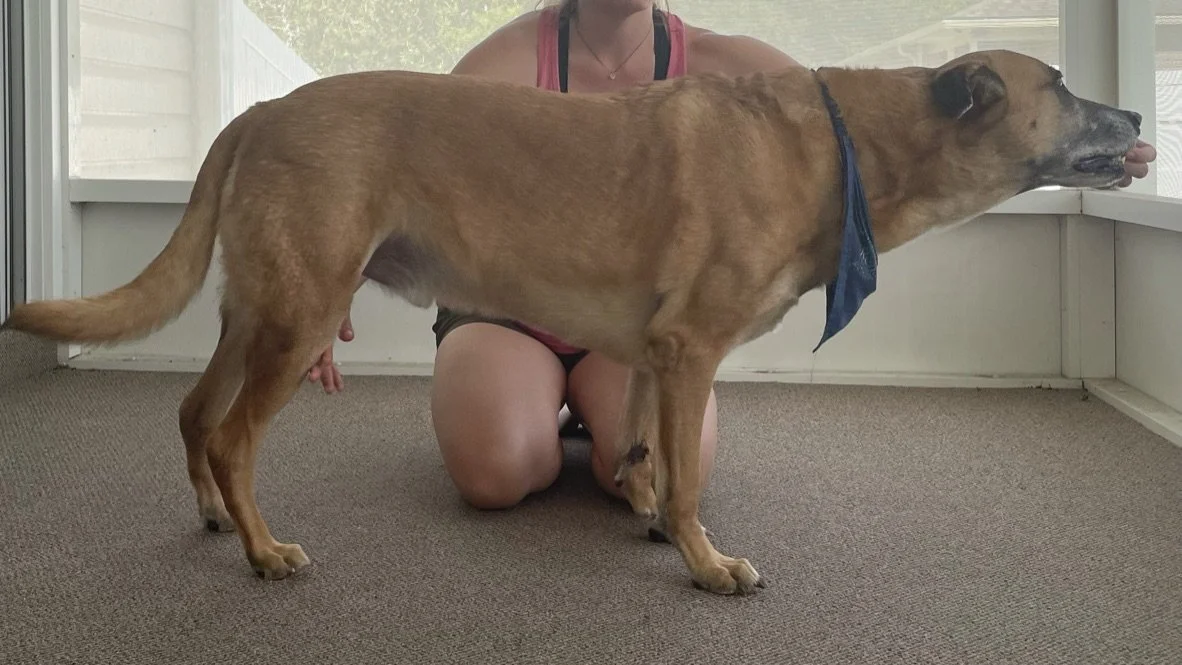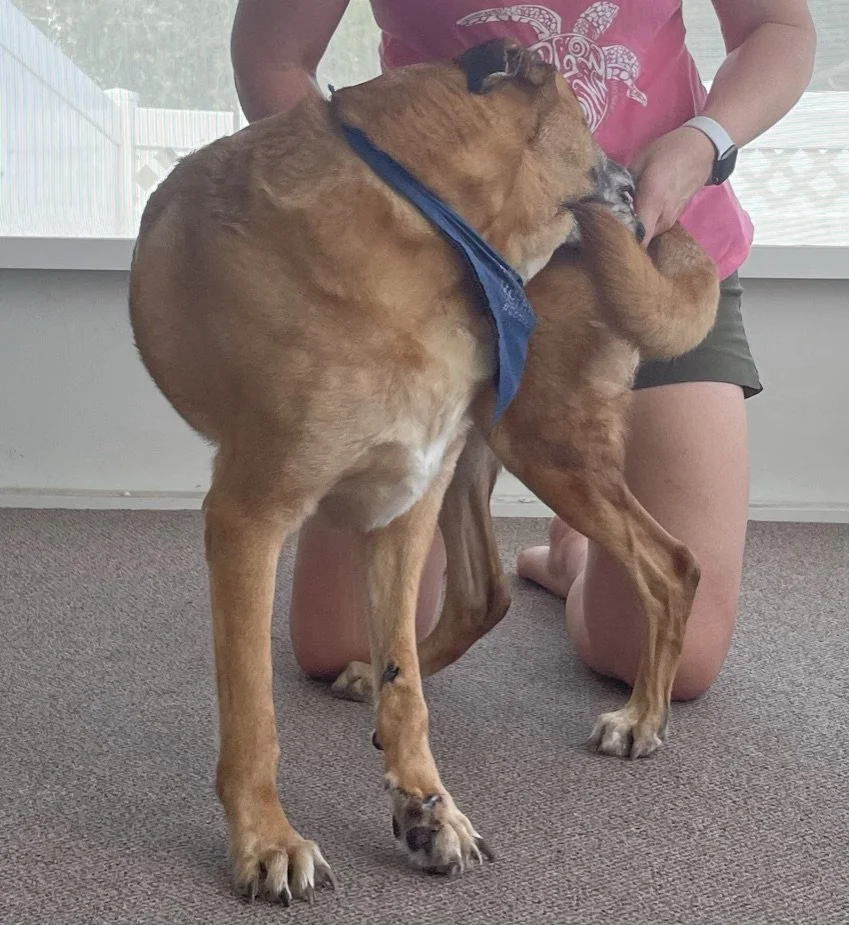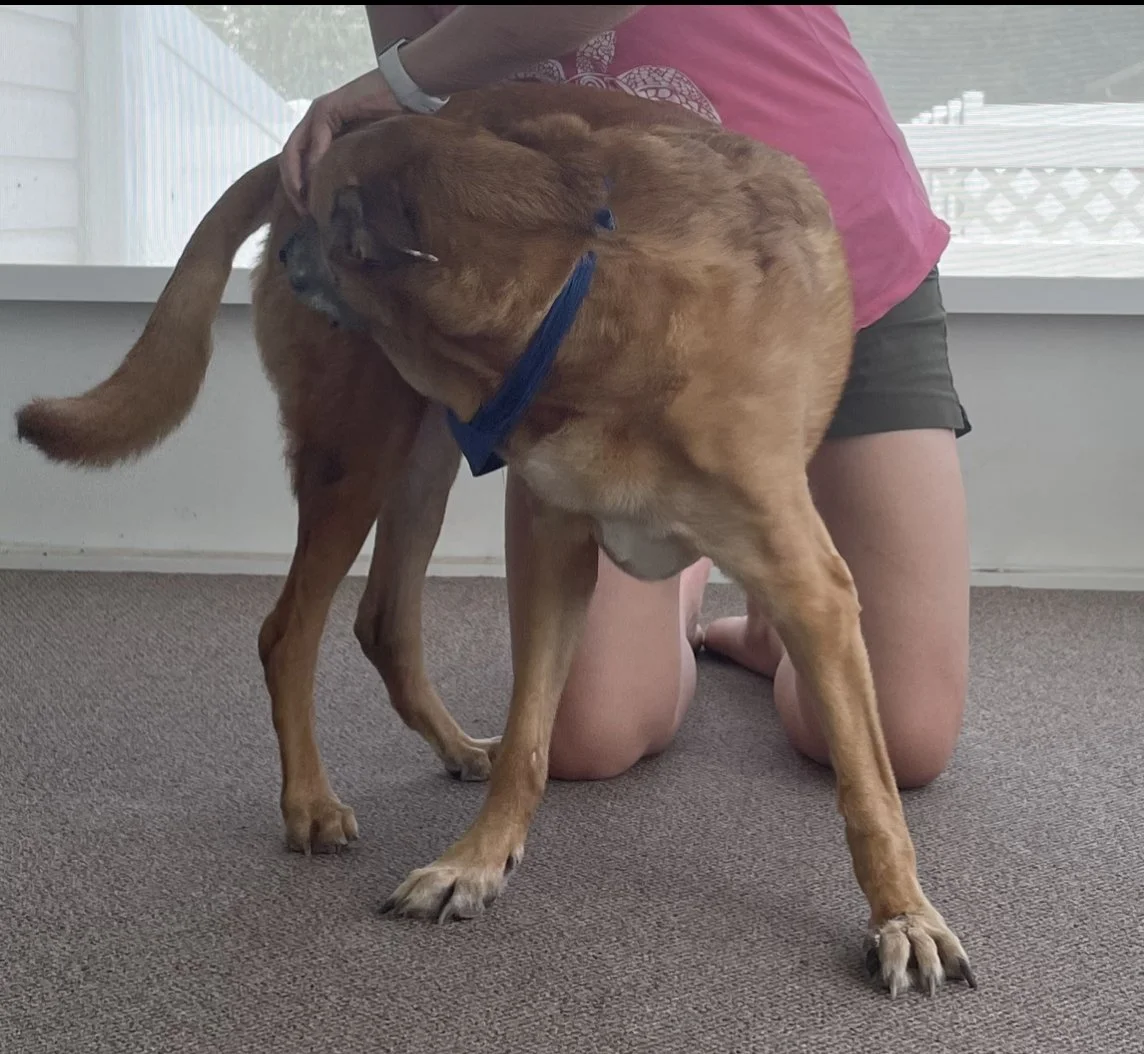June 2024
Dear clients,
The hot and humid summer has arrived! We hope you and your pups are all staying cool.
This month I want to highlight the basics of every rehabilitation program: balance and stability.
Balance and Stability
Balance and stability help with daily movement and activities. Without these basic abilities, getting off the floor would be like trying to stand during an earthquake. While we may take those abilities for granted, they can worsen with injury or even age. Our goal in any rehabilitation plan is to begin improving balance and stability while we are improving pain management.
These exercises may seem easy to perform, but they are important building blocks for more advanced movements.
I would like to walk through a few of these exercises that you would commonly see in your pet’s home exercise program.
Cat/cow
This exercise elongates the spine (cow) to stretch out the vertebrae with the counter stretch with flexion of the spine (angry cat). This movement strengthens the core stabilizing muscles of the spine and abdomen. It is also mimicking the posture of apprehending food or water from a bowl requiring balance on all 4s.
The key for this exercise is to have one hand under the belly and the hand with the treat is reaching out to “stretch the spine”.
To make this exercise harder, perform while standing on a mattress.
Cookie stretches to the hip
This exercise has multiple benefits. Spinal flexibility is key to allowing our pet’s to continue to clean themselves, itch, even move around the house better. It is a weight shifting activity and it also works to promote balance on all 4s.
The key for performing this exercise is to have the rear end closest to you to prevent them from spinning in a circle. You can also help to keep them from sitting with a gentle hand under their belly.
This exercise can be made more difficult by isolating the stretch to the shoulder, last rib, or rear toe. Repeat on each side 3 times twice daily.
Weight shifting
This exercise requires stabilization while a force is being applied to throw them slightly off of balance. This can be a difficult exercise if the dog has poor balance or if the force is too great. This exercise can also be performed with a cookie leading the head in a box (aka Head in a box). See the videos below.
This exercise can be made harder by performing on a mattress.
All of the exercises listed above are generally ok for all patients, except those with acute cervical pain, who are post-operative spinal surgery, or who are paralyzed. We will indicate for those specific patients when it is safe to resume these exercises.
If you have questions please feel free to reach out and let us know!




